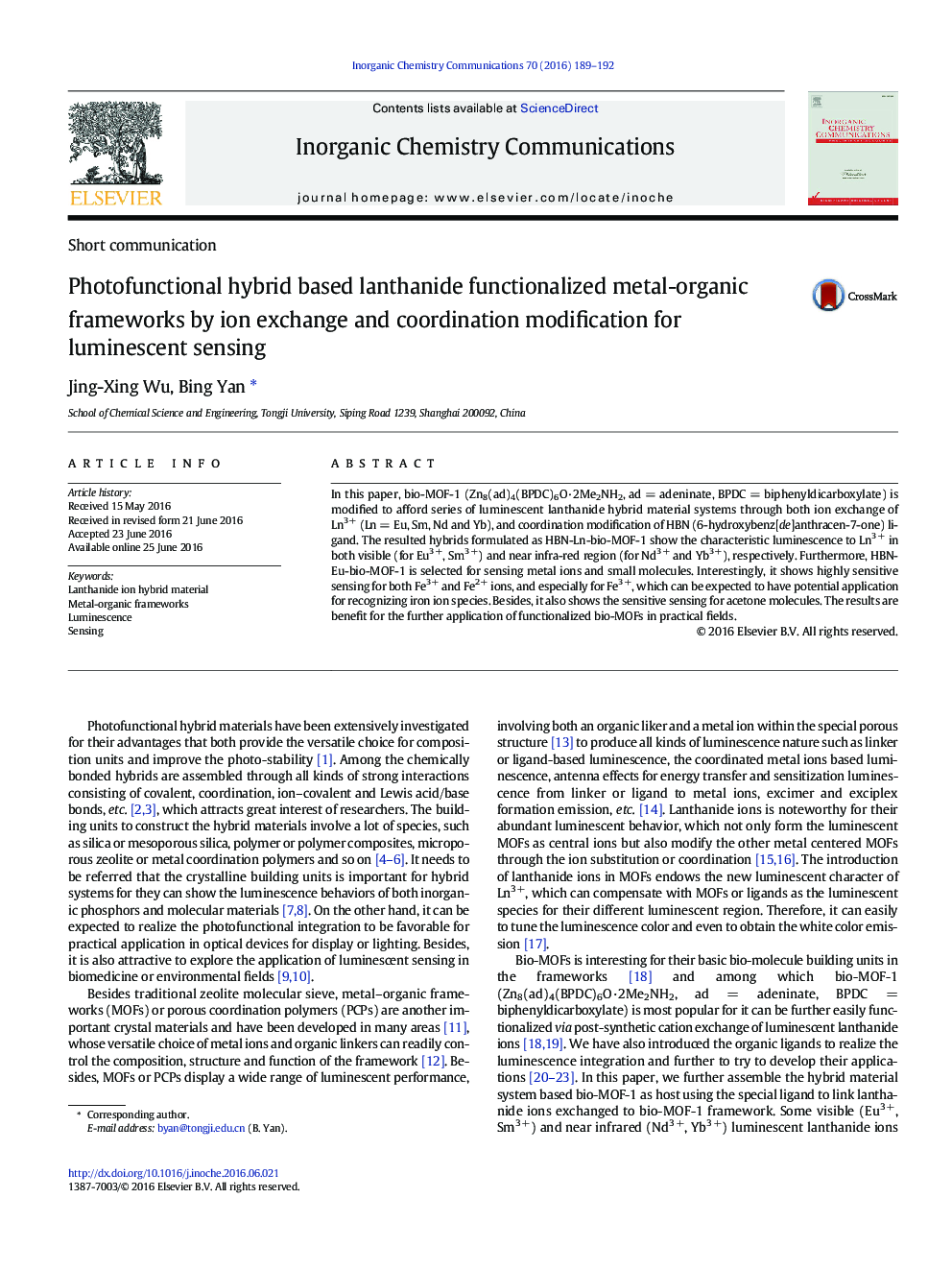| Article ID | Journal | Published Year | Pages | File Type |
|---|---|---|---|---|
| 1305239 | Inorganic Chemistry Communications | 2016 | 4 Pages |
•Hybrids with lanthanide complex functionalized bio-MOF-1 host•Luminescence in both visible and near infrared region•Luminescent sensing of Fe3 +/Fe2 + and acetone
In this paper, bio-MOF-1 (Zn8(ad)4(BPDC)6O·2Me2NH2, ad = adeninate, BPDC = biphenyldicarboxylate) is modified to afford series of luminescent lanthanide hybrid material systems through both ion exchange of Ln3 + (Ln = Eu, Sm, Nd and Yb), and coordination modification of HBN (6-hydroxybenz[de]anthracen-7-one) ligand. The resulted hybrids formulated as HBN-Ln-bio-MOF-1 show the characteristic luminescence to Ln3 + in both visible (for Eu3 +, Sm3 +) and near infra-red region (for Nd3 + and Yb3 +), respectively. Furthermore, HBN-Eu-bio-MOF-1 is selected for sensing metal ions and small molecules. Interestingly, it shows highly sensitive sensing for both Fe3 + and Fe2 + ions, and especially for Fe3 +, which can be expected to have potential application for recognizing iron ion species. Besides, it also shows the sensitive sensing for acetone molecules. The results are benefit for the further application of functionalized bio-MOFs in practical fields.
Graphical abstractLuminescent lanthanide hybrid material systems through the functionalization of bio-MOF-1 and show the characteristic luminescence to Ln3 + in both visible (for Eu3 +, Sm3 +) and near infra-red region (for Nd3 + and Yb3 +), respectively. HBN-Eu-bio-MOF-1 is selected for sensing metal ions and small molecules, showing highly sensitive sensing for both Fe3 + and Fe2 + ions, and especially for Fe3 + as well as for sensitive sensing for acetone molecules.Figure optionsDownload full-size imageDownload as PowerPoint slide
